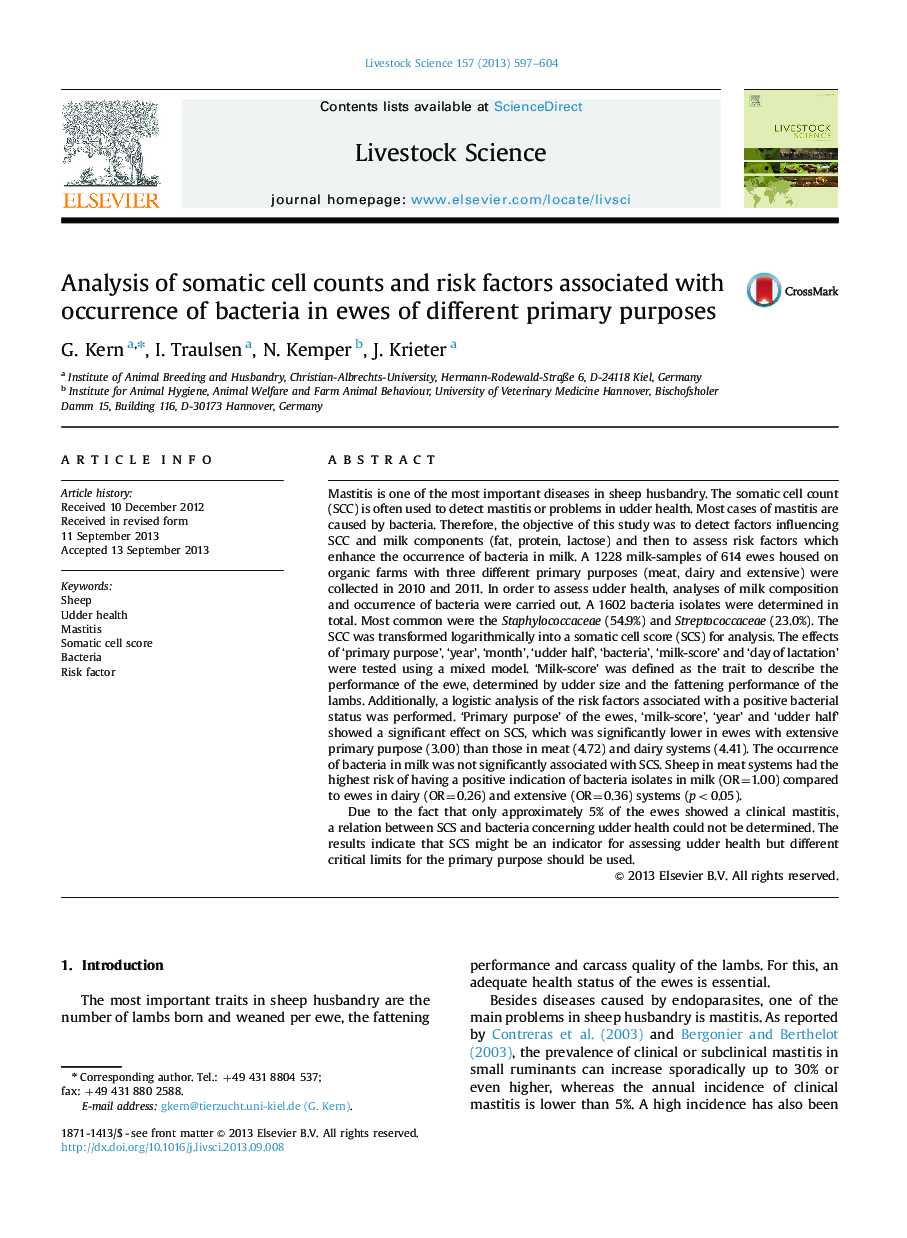| کد مقاله | کد نشریه | سال انتشار | مقاله انگلیسی | نسخه تمام متن |
|---|---|---|---|---|
| 2447388 | 1553975 | 2013 | 8 صفحه PDF | دانلود رایگان |

Mastitis is one of the most important diseases in sheep husbandry. The somatic cell count (SCC) is often used to detect mastitis or problems in udder health. Most cases of mastitis are caused by bacteria. Therefore, the objective of this study was to detect factors influencing SCC and milk components (fat, protein, lactose) and then to assess risk factors which enhance the occurrence of bacteria in milk. A 1228 milk-samples of 614 ewes housed on organic farms with three different primary purposes (meat, dairy and extensive) were collected in 2010 and 2011. In order to assess udder health, analyses of milk composition and occurrence of bacteria were carried out. A 1602 bacteria isolates were determined in total. Most common were the Staphylococcaceae (54.9%) and Streptococcaceae (23.0%). The SCC was transformed logarithmically into a somatic cell score (SCS) for analysis. The effects of ‘primary purpose’, ‘year’, ‘month’, ‘udder half’, ‘bacteria’, ‘milk-score’ and ‘day of lactation’ were tested using a mixed model. ‘Milk-score’ was defined as the trait to describe the performance of the ewe, determined by udder size and the fattening performance of the lambs. Additionally, a logistic analysis of the risk factors associated with a positive bacterial status was performed. ‘Primary purpose’ of the ewes, ‘milk-score’, ‘year’ and ‘udder half’ showed a significant effect on SCS, which was significantly lower in ewes with extensive primary purpose (3.00) than those in meat (4.72) and dairy systems (4.41). The occurrence of bacteria in milk was not significantly associated with SCS. Sheep in meat systems had the highest risk of having a positive indication of bacteria isolates in milk (OR=1.00) compared to ewes in dairy (OR=0.26) and extensive (OR=0.36) systems (p<0.05).Due to the fact that only approximately 5% of the ewes showed a clinical mastitis, a relation between SCS and bacteria concerning udder health could not be determined. The results indicate that SCS might be an indicator for assessing udder health but different critical limits for the primary purpose should be used.
Journal: Livestock Science - Volume 157, Issues 2–3, November 2013, Pages 597–604